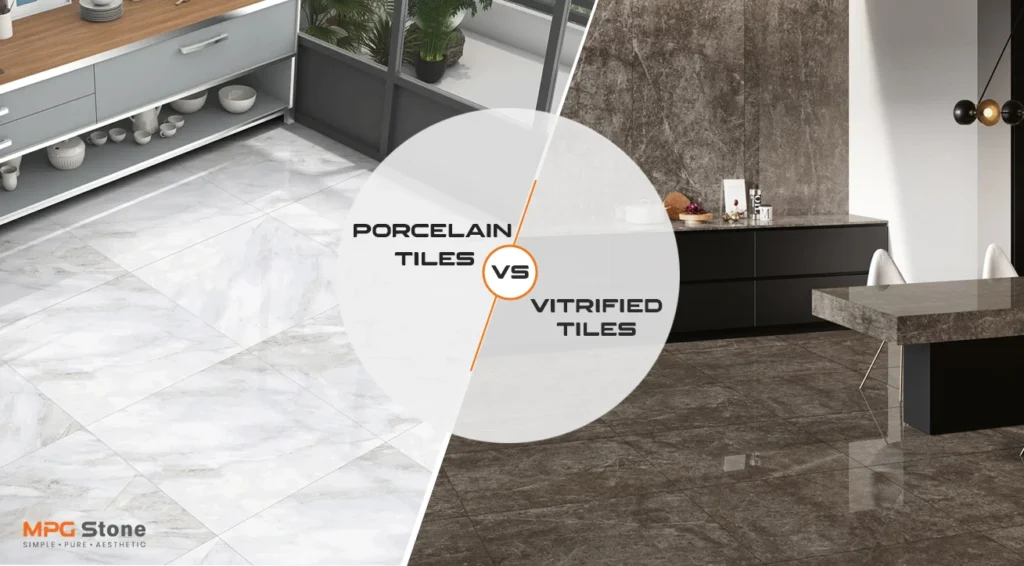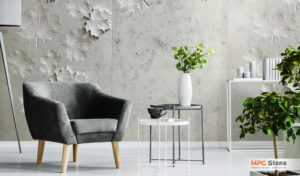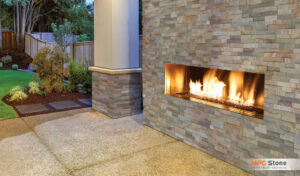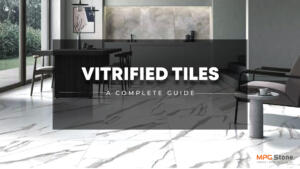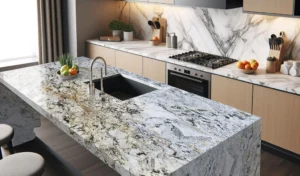Are you planning to renovate your home or office space and looking for the perfect tiles to enhance its aesthetic appeal? With so many options available, choosing the right type of tile can be overwhelming, especially when it comes to vitrified and porcelain tiles. Are they the same or different?
Don’t worry; we’re here to clear up the confusion and provide you with all the facts. In this blog, you’ll explore the differences between vitrified and porcelain tiles, helping you make an informed decision for your project.
1. Manufacturing Process
Vitrified Tiles
Vitrified tiles are made by mixing clay, feldspar, quartz, and silica. This mixture is pressed by hydraulic pressure to make its surface vitreous.
Porcelain Tiles
Porcelain tiles are made by baking fine and denser clay at very high temperatures in a kiln to form a hard and dense tile.
2. Materials Used
Vitrified Tiles
Materials used as raw materials during the making of vitrified tiles include clay, silica, feldspar, and quartz slabs.
Porcelain Tiles
The material used during the production of porcelain tiles includes clay minerals such as kaolinite, quartz, ball clay, feldspar, glass, petuntse, steatite, alabaster, and bone ash.
3. Durability
Vitrified Tiles
Vitrified tiles are durable in nature and can easily withstand high-traffic areas with a life span of 10 to 15 years if maintained well.
Porcelain Tiles
Porcelain tiles are comparatively more durable than vitrified tiles, can last more than 60 years, and can also withstand high-traffic areas.
4. Finishes Available
Vitrified Tiles
Vitrified tiles are available in different types, which include full-body, glazed, soluble salt, and double-charge vitrified tiles in different finishes like metallic, rustic, satin, matte, and glossy.
Porcelain Tiles
Porcelain tiles are available in various finishes, such as honed, smooth, and matte, and are of three types, which include glazed, technical, and premium glazed porcelain tiles.

5. Water Absorption
Vitrified Tiles
Vitrified tiles have a water absorption rate of less than 0.5 percent, which makes them ideal for use on flooring.
Porcelain Tiles
Porcelain tiles have a water absorption rate of a mere 0.5%, which makes them a great choice for flooring.
6. Slip Rating
Vitrified Tiles
Vitrified tiles are considered extremely slippery, specifically in water-prone areas, and their manufacturing process makes them a non-eco-friendly option.
Porcelain Tiles
Porcelain tiles are both slippery and non-slippery based on the specific slip rating they have, which makes them the ideal choice to use in high-traffic areas such as malls and outdoor patios.
7. Resistance
Vitrified Tiles
Vitrified tiles are mostly resistant to stains, dirt, and water and are also easy to clean and maintain.
Porcelain Tiles
Porcelain tiles are resistant to thermal shock, ice, and water, and they also require little to no upkeep.
8. Price Range
Vitrified Tiles
Vitrified tiles are considered expansive compared to porcelain tiles due to their manufacturing process.
Porcelain Tiles
Porcelain tiles are relatively expensive as compared to other tile options but are cheaper than vitrified tiles.
9. Applications
Vitrified Tiles
Vitrified tiles have various applications that include both indoor and outdoor areas such as kitchen backsplashes, bathroom floors, gardens, and rooftops.
Porcelain Tiles
Porcelain tiles are also a great option to use in both interior and exterior spaces such as kitchens, bathrooms, common areas, and high-traffic areas.
10. Installation
Vitrified Tiles
Vitrified tiles are made in such a way that they are easier to install without any specific requirements from professional installers.
Porcelain Tiles
Porcelain tiles are hard to install, and they are heavy in size and need professionals to install them, as any little mistake can damage them easily.
11. Sealing
Vitrified Tiles
Vitrified tiles don’t generally require sealing as there is no surface glaze, which means the color and texture remain for a long time.
Porcelain Tiles
Most porcelain tiles don’t require any sealing, but some of them do need a minor application of penetrating sealer in order to fill the small pores.
Conclusion
After exploring the differences between vitrified and porcelain tiles, it’s clear that both options have their own unique characteristics. Vitrified tiles offer durability, low water absorption, and a wide range of finishes, making them suitable for various indoor and outdoor applications. On the other hand, porcelain tiles boast exceptional strength, longevity, and resistance to stains and water. They are an excellent choice for high-traffic areas.
Ultimately, whether you choose vitrified or porcelain tiles, both options offer beauty, functionality, and versatility. Take your time, weigh the pros and cons, and select the tiles that align with your project’s needs. With the right choice, you can transform your space into a stunning and enduring masterpiece.
If you have any further questions or need assistance with your tile selection, feel free to reach out to us. Our team of experts is here to assist you with the right selection of tiles for your project requirements.
